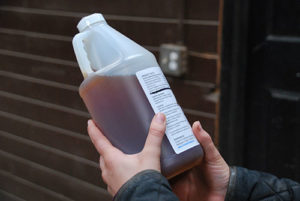University of Florida Vet Faculty Work to Solve Polo Pony Mystery
Postmortem testing conducted by University of Florida College of Veterinary Medicine pathologists and toxicologists on a group of prized polo horses that collapsed and died April 19 in Wellington, Fla., drew international attention, with riveted members of the public and the press wanting answers about the mysterious cause of death.
Blood and tissue samples were gathered from 15 horses o
- Topics: Article
Postmortem testing conducted by University of Florida College of Veterinary Medicine pathologists and toxicologists on a group of prized polo horses that collapsed and died April 19 in Wellington, Fla., drew international attention, with riveted members of the public and the press wanting answers about the mysterious cause of death.
Blood and tissue samples were gathered from 15 horses on which UF pathologists conducted necropsies. Six other horses had been sent to the Florida Department of Agriculture and Consumer Services’ diagnostic laboratory in Kissimmee, Fla., for postmortem examinations. The necropsies of all 21 horses yielded no answers, nor did subsequent microscopic examinations. Even the UF Racing Laboratory, which routinely conducts toxicology screening tests of racehorses in the state, revealed nothing initially that could explain the horses’ sudden deaths.
Subsequent tests conducted by UF toxicologist David Barber, however, verified the presence of life-threatening concentrations of selenium in the horses’ blood and liver samples. The concentrations were found to be 10 to 15 times higher than normal in the blood and 15 to 20 times higher than normal in the liver.
“Our role in testing was key, not only because we were able to verify the toxic levels of selenium found to be present in the blood and liver of these horses, but also because through additional testing conducted at our Racing Lab, we were able to rule out the presence of common performance-enhancing drugs,” said Dr. John Harvey, the college’s executive associate dean and a board-certified clinical pathologist
Create a free account with TheHorse.com to view this content.
TheHorse.com is home to thousands of free articles about horse health care. In order to access some of our exclusive free content, you must be signed into TheHorse.com.
Start your free account today!
Already have an account?
and continue reading.
Related Articles
Stay on top of the most recent Horse Health news with

















